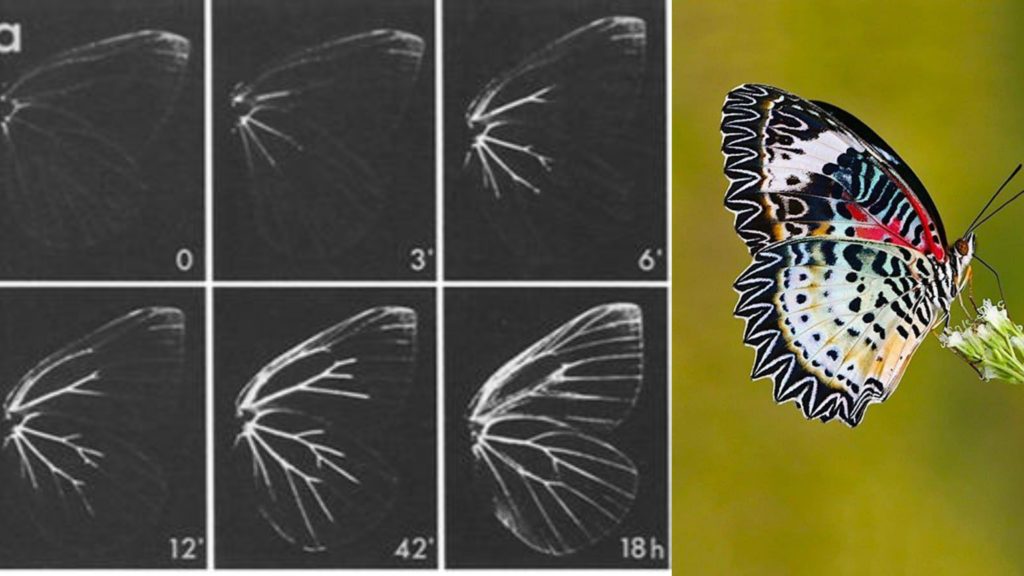
The wings of a butterfly are membranous with veins running longitudinally from the base (where the wings are attached to the thorax) to the outer margins of the wings. The pattern and arrangement of these veins (wing venation) is an important diagnostic tool in the identification of butterflies. It is therefore important to understand the wing venation as a reference to locating features that are associated with the veins/spaces on a butterfly’s wings. In addiction, adult butterflies often sense sound through veins in their wings, but scientists have only studied this in a limited number of species. The veins of a butterfly’s wings gives the structural strength to the soft membranous wings onto which the scales are attached. These veins are tubular, in which a liquid ‘blood’, or haemolymph circulates within them.
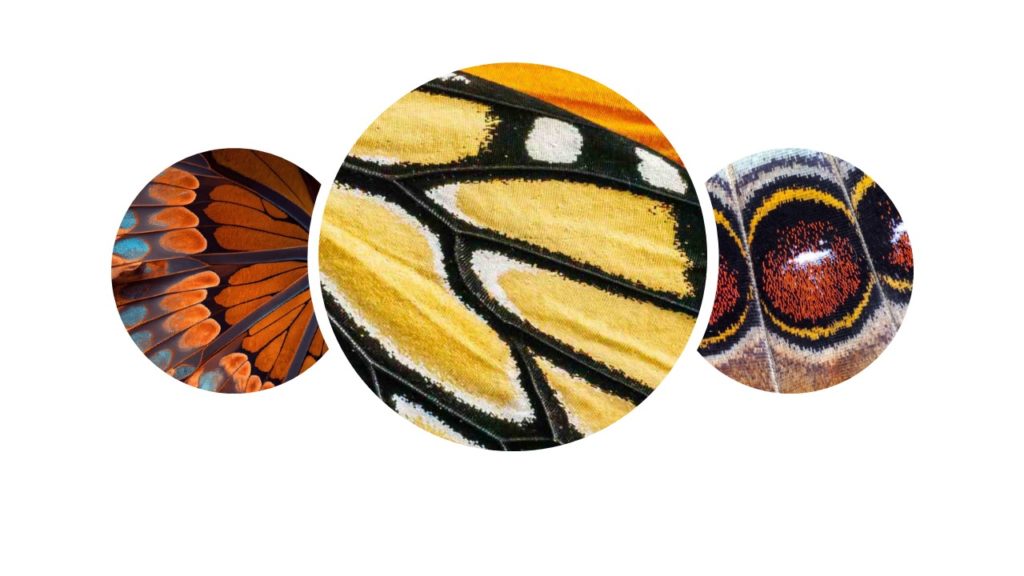
The aim of our project is to simulate differential growth. This process produces unique geometries and structures found in natural phenomena such as plants, biofilm formation, and flowers. It is also observable within ourselves, for-instance, in our heart, brain, and fingerprints. In order to simulate differential growth, we start with an initial distribution of nodes and connecting edges.
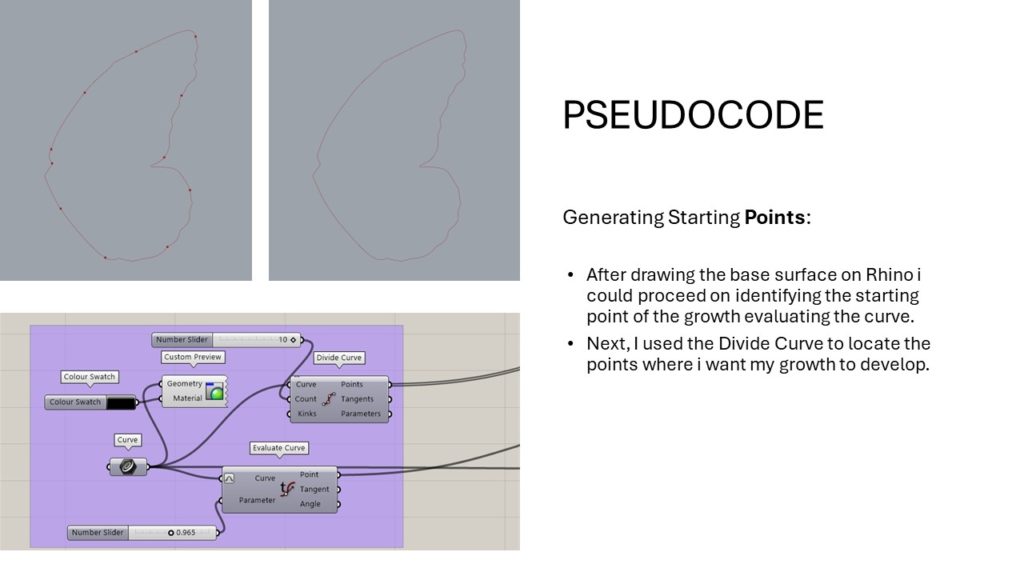
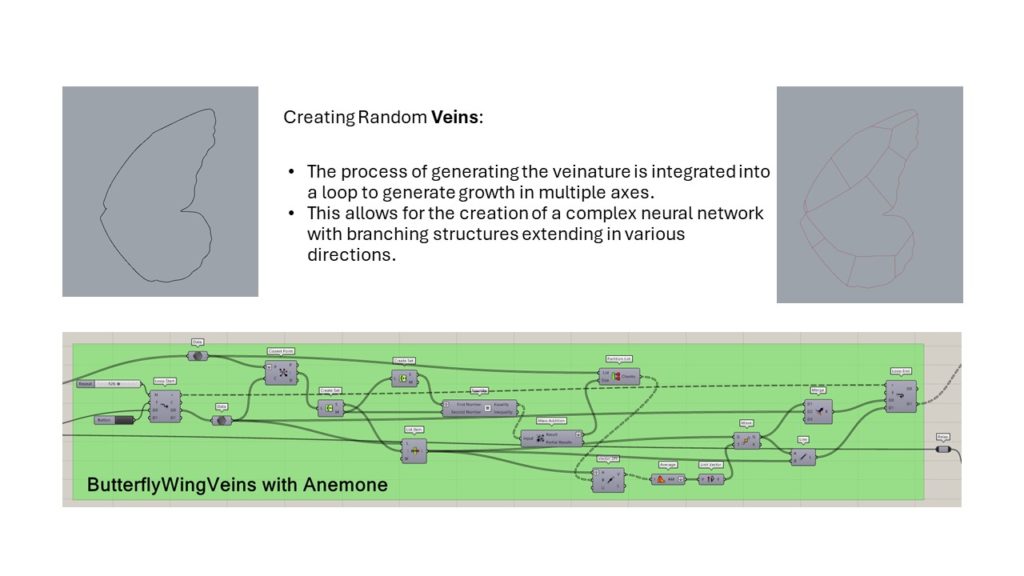
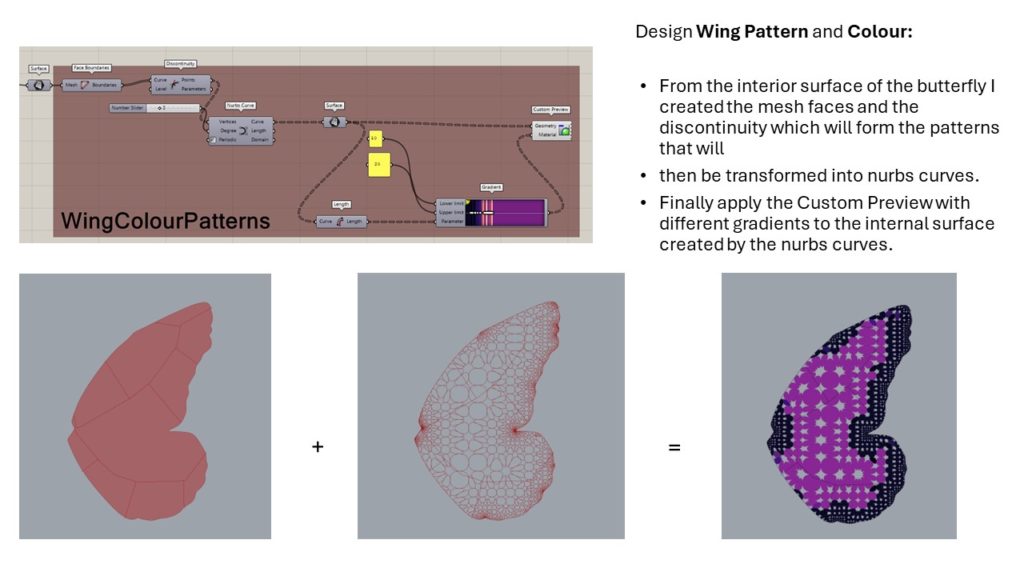
Next Steps
For future projects, it would be interesting to develop a more full-bodied growth in the wings characterised by different colour pigments that are easy to control depending on different values such as brightness, communication, camouflage, thermoregulation, warning and camouflage, and avoidance of predator attack.

